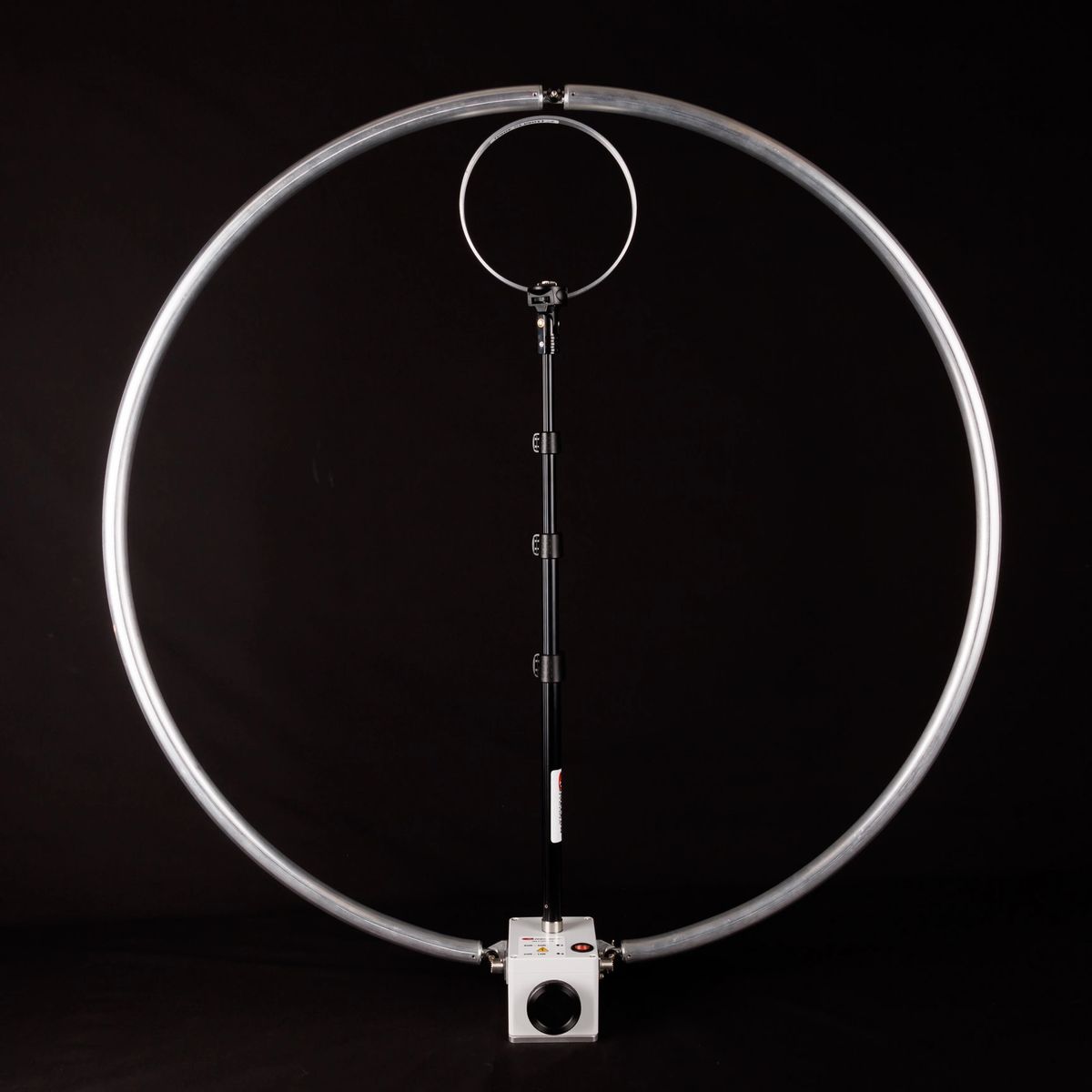As I write this, an Icom R75 is playing behind me, the antenna feeding the rig is a single turn around the window frame, and a feed line of sorts was made out of the excess wire coming from where the wire made a complete turn, twisted a few turns per inch. This feeds into the 500ohm balanced input of the R75. The drapes hide everything for the most part.
Before I designed this home expedient antenna it was a simple wire about 16ft long draped over the top of the same window, feeding a Grove TUN3 minituner. It dawned on me to try the Hi z input of the Icom and use a loop to do so, bypassing the minituner completely.
The wire loop is somewhere around 12 to 16ft in length with a feed about 3ft long. On mine the feed comes about fingertip to elbow from the bottom corner, just how it worked out I didn't plan it. I've seen data saying where you feed a square or rectanglar loop determines polarity however, corner is one way, middle is the other, etc. Don't worry about replicating my specific numbers as far as wire lengths and feed positions, just make one with what you have to work with and see how it goes.
The performance dif between the 2 antennae was very apparent right away, before the loop I had a hard time on ambc, especially below about 1000kHz and always had to fine tune the minituner for best results. As the short wire the antenna was a poor performer on ambc with low gain, the loop works great all over the ambc band with much more gain, and it even hears WWVB most nites - and this is exactly opposite to what I thought was going to be the result. No prob tuning below 800 in the ambc band unlike the meandering wire draped over the window frame. No tuning the antenna, just spin the vfo and listen. I listen to ARINC a lot and the NYC, Gander, Azores, and other stations in the high 8MHz band come in with excellent signal strength, as do many of the flights. Often I catch fsk from Russia in the mid 10MHz range,, RAF volmet on 11253 from Brize Norton in the UK I think, most all the hfbc still on the air, I guess loops just work.
Tuning around the hf bands on this setup I often find new digital sigs that make me fire up the big rig/big ant setup and pc to identify. So far I've not come across a sig that went unheard on the tiny loop as opposed to the 100ft horizontal loop or the single element wullenwebber (hf vertical) that feed the main rigs in the big shack. Lately I've spent more time using this puny setup tuning around the bands like I was a kid again than with the deluxe spy (winradio) sdrs and real antennas in the big shack.
Glad I tried this loop idear.
If you don't have a Icom R75 with a balanced input you can just pop a balun onto the output of your window loop and feed coax to the rig.
Any balun should do, even a tv 300 ohm jobbie. It's not like you're going to transmit on it so a perfect match over the hf band is irrelevant. Oh wait yes you will if you're like me and used it to, for example, check into a HAM ssb net on 40m, 10watts from an Icom 703, Michigan to Indiana.


